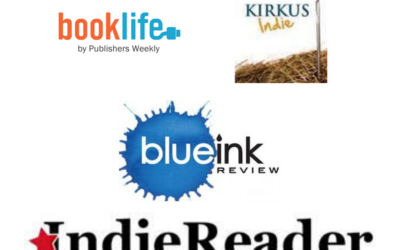Literary Publicist, Stephanie Barko, discusses the value of book covers.
Tip #6: Book Covers
Book covers sell books. Most of us would agree on this, right? If a picture is worth a thousand words, then your book cover is speaking for your whole story when a potential reader takes a look at it. Think about the mood you want that image to convey and how a font could reinforce that message and tone of voice. Imagine your plot or characters as a single scene. Does your cover convey that feeling?
It pays for indie authors to hire the most experienced Book Designer they can afford to render the front cover. Although you don’t have to use original art to have a great cover, stock images should be integrated with the text and adapted to your book’s context. You might want to use the words “novel” or “memoir” if the image is confusing in terms of your genre. If you have a super endorsement, consider displaying a portion of it on the front cover.
One of the most frequent questions I receive from clients is what to put on the back cover. After the front cover, the most important sales element of your book is the back cover. The text on the back cover is the domain of the Book Publicist, and it is one of the most effective means of gaining recognition for independent publishers and authors. Regardless of whether the back cover increases book sales, it conveys a higher level of credibility for small presses and authors and can even differentiate the title in some cases.
Here are the elements that I consider essential to a paperback back cover. This is what your readers are expecting to see:
- -short synopsis or bullet points
- -short author bio
- -author URL
- -endorsements with byline
- -price
- -ISBN
- -genre & subgenre
- -barcode
- -photo credits
Share your experience working with a book cover designer or book publicist in a Comment below. Tell us about your book covers.





I once read that if you have a person on the front book cover looking at you, a potential reader/buyer is more likely to pick up the book and look at it. And having sold thousands of books, I know that the first step in having someone buy my book is for them to pick it up and look at it. I have people on all my book covers, looking out. Heck, on my latest book, “Where Jewish Grandmothers Come From,” I have three people looking at the audience–figuring if one is good, imagine what three can do. And it’s true, I’ve barely marketed that book since it came out in April and I’ve sold 165 copies so far. I love the part where people tell me how much I look like my grandmother, and it’s not MY grandmother on the book cover.
How great that you have featured Larry Brill in this post! His wife, graphic designer extraordinaire Kim Brill, designed the cover for a poetry book I published for a friend of mine. I broke my “cardinal” rule of putting someone on the front cover looking out at you; however, the book title, “Meeting God at Midnight” is so compelling, and the graphics so gorgeous, that again, people pick up the book and look at it.
I like to think of a book cover making a “first impression” on the potential reader in the same way a person makes a “first impression” when meeting someone else for the first time. The cover, in my experience, makes or breaks a book at first glance–and if it’s intriguing enough, the potential buyer/reader will either buy it right then, or, take a next step, opening it up and seeing if it’s something they’d like to take home with them or give as a gift.
Keep these tips coming, Stephanie!